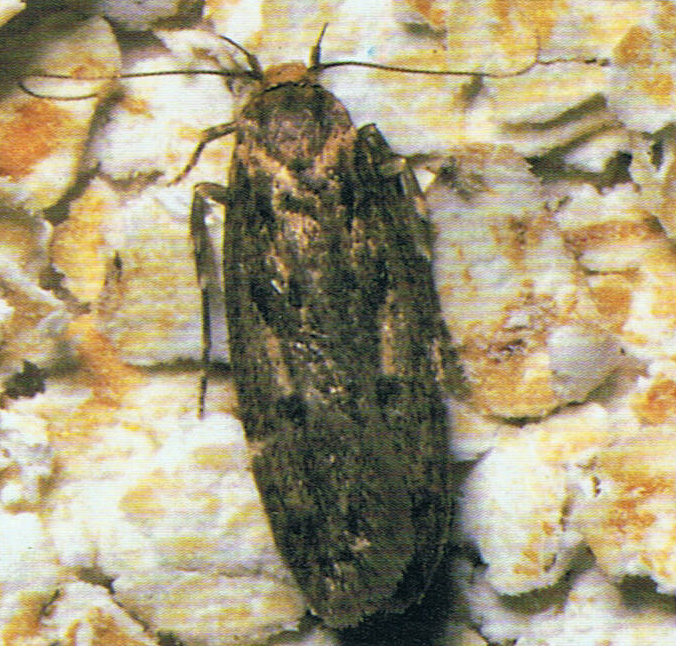Table Of Content
Like pantry moths, these moths can still be a risk to your food. They'll seek out grain and other dry foods, as well as protein-based fibers including wool and leather. They have a wingspan of millimeters and can be found anytime during the year in your home. While these moths tend to go after flour, they will also lay eggs near breakfast cereal, dried grain, bran, and oatmeal.
ways to get rid of moths
"It is important that items that are stored with mothballs are in a tightly sealed container where the fumes cannot easily escape." This can often lead to frustration and loss of items that can be damaged by the larvae before being successfully treated. Hummingbird clearwing moths are just as drawn to gardens as butterflies, and they can help with pollination.
Commercial Silkmoth
These nocturnal creatures play vital ecological roles as pollinators and food sources, while some serve as agricultural pests requiring management. Get ready to explore some of the most common moths you’ll encounter around your home, garden, and in natural habitats statewide. We’ll cover identification tips, fascinating life histories, host plants, and interesting facts about 20 species.

Where Do Moths Live?
Some home-invading moths are referred to as clothes moths because they are attracted to fabric. Two species of clothes moths are the webbing clothes moth and the casemaking clothes moth. A good indication of a pantry moth infestation is webbing or tiny larvae squirming around inside your food containers when you open them. Pantry moths generally only last for a few days once they get inside of your home. However, it is common to see them flying around in the darkness at night feeding on trees and shrubs.
The Moth Custom Tiny House Is a Very Artsy Office on Wheels - autoevolution
The Moth Custom Tiny House Is a Very Artsy Office on Wheels.
Posted: Tue, 09 May 2023 07:00:00 GMT [source]
Clean cupboards and shelves to eliminate pantry moths
To get rid of drain flies, you can clean the pipes with natural solutions such as baking soda and vinegar, or chemical drain cleaners. Identifying each moth species can be difficult since there are many types of moths. Most moth species look like their butterfly cousin but with duller colors and patterns. Aside from the differences in colors, they also differ in size. You are more likely to recognize an Isabella tiger moth as a caterpillar than as a fully developed moth. Isabella tiger moth caterpillars are easy to spot with the brown and back pattern on their backs.
The Annoying But Mostly Harmless Moths that Sometimes Get In Houses
Natural remedies are a great alternative to chemical pesticides when it comes to dealing with brown house moths. These remedies are not only effective but also safe for both humans and pets. One popular natural remedy is to use essential oils, such as lavender or peppermint, which have strong scents that repel moths. Simply mix a few drops of the oil with water and spray it in areas where moths are commonly found, such as closets or pantry shelves. Another effective natural remedy is to use cedar chips or cedar oil, as moths are repelled by the scent of cedar.
The Eudryas grata is the largest moth from the Eudryas species. The rosy maple moth is one of the most colorful and spectacular moths you will see. Native to North America, the furry rosy maple moth has brightly colored pink and yellow wings, pink legs and antennae, and a hairy yellow body. Rosy maple moths have a wingspan of between 1.25” and 1.75” (3 – 4.5 cm). These actually have the ability to chew through containers to access dry food products.
White-shouldered house moth
Cecropia moths are easy to spot because of their large size and massive wingspan. They are the largest moth in North America, and female cecropia moths have wingspans that measure up to 7” across. Cecropia caterpillars can be intimidating because of the bristles on their back, but they are harmless.

Instead, put the items into sealed plastic bags and freeze them for 72 hours. The Indian meal moth measures 0.31” to 0.39” (8 – 10 mm) with a wingspan up to 0.78” (25 mm) wide. The common house moth is sometimes called the weevil moth, flour moth, grain moth, or pantry moth. Also called the mill moth, the Mediterranean flour moth has grayish wings with black and tan mottled patterns and a wavy black and gray pattern across the center. This gray house moth also has contrasting hind wings that are an off-white color.
If you do have items in your house that a moth would happily snack on, it’s crucial to keep them clean. Ensure you vacuum any rugs and carpets regularly, getting right up close to corners and skirting boards, and pulling out bulky furniture to hoover underneath. Moths tend to feed in a protected area, says Bungay, such as under sofas and tables. You might notice moth activity starting to ramp up around now – although if you have an infestation, it’s likely they’ll have been cracking on out of sight for a while. Paul Blackhurst, head of the technical training academy at Rentokil, explains moths are present throughout the year, but at different stages of their life cycle. Plenty of food, dark environments, and easy entry sums upwhat causes moth infestation.
The intricate patterns on their wings also play a role in attracting mates during the mating season. The White-Shouldered House Moth is a fascinating species that has captured the curiosity of biologists and homeowners alike. In this comprehensive guide, we will delve into the world of this moth, exploring its behavior, habitat, and the impact it has on both natural ecosystems and human dwellings. Join us on this enlightening journey to discover more about the White-Shouldered House Moth.

No comments:
Post a Comment